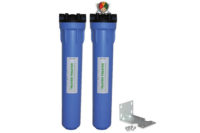The rivalry between tank and tankless water heaters has been building ever since tankless water heaters were introduced into the North American market. Since then, misconceptions about tankless water heaters have continued to circulate. In response, Rinnai America Corporation has launched the “Tankless Truths Campaign,” focused on dispelling myths associated with tankless water heaters.
Rinnai leveraged its industry expertise as well as its key strategic partnership with Matt Risinger, leading personality on the Build Show Network and CEO and chief builder of Risinger Build in Austin, Texas, to highlight the inaccurate view that tankless is not an effective alternative to tank water heaters. The misperceptions were ousted via Risinger’s channel, as he walked his viewers through each misconception.
Contrary to popular belief, tankless water heaters can actually increase efficiency, create more space, provide hot water all the time, and have a long shelf life.
“I think there’s a lot of people who are not sure about this technology, which is why I am happy to help educate and spread awareness of the Rinnai Tankless Truths Campaign,” said Risinger.
Eight Myths of Tankless Water Heaters
“There are really eight big lies out there about tankless water heaters,” Risinger said.
-
Tankless doesn’t work with cold inlet temperatures.
“This is total a lie,” Risinger said. “Like 100,000 of these units per year in Canada” — where as everyone knows, it gets pretty cold in the north in the winter. “You can actually get 5 gallons per minute out of a tankless unit. Which means I can actually run three showers simultaneously.” -
Tankless units are expensive — and expensive to install.
While in the last couple years the market has seen the prices of tanks go up and up, contractors can actually get a noncondensing unit for the same price or maybe even cheaper than a tank, Risinger said.
“And believe it or not, a good plumber who knows what he’s doing can install it in the same amount of time as a standard tank.” -
Venting is too expensive on tankless units.
Some tankless units have vents that have plastic on the outside and aluminum on the inside, which is not very expensive, according to Risinger, and the vent can be used on certain products other noncondensing units. -
Scale and hard water are problems for tankless water heaters.
Risinger discovered the hidden truth about tanks when he decided to cut a bunch open. He was shocked at how disgusting they were on the inside.
“The scale had built up so it was a foot or more thick in the bottom of some tanks that were not even a decade old. So, no matter what type of water heater you use, it has to be maintained.” -
Tankless water heaters are slow to respond to demand.
Risinger said it doesn’t matter what is making the hot water; what matters is the amount of cold water that is between the water heater and the fixture being used that’s going to dictate how long it takes to get hot water out of the faucets. But when it comes to tankless, some units even include built-in circulation pumps. -
Stainless steel heat exchangers are better.
Non-condensing models use copper heat exchangers, which makes sense to Risinger considering copper is a better heat conductor than steel. -
Low gas pressure makes the installation of tankless unaffordable.
The myth stems from the thought process that the line — the gas supply size — always has to be upgraded when replacing a tank with a tankless water heater. Yet according to Risinger, that doesn’t necessarily always have to be done. In condensing models, the gas line, in combination with the technology on regulatory and the turbo fan, can actually draw gas through the line. -
Tankless is a new technology that hasn’t been proven yet.
Tankless water heaters have been selling in America since the 1990s, but for decades earlier than that, they sold in Japan, Risinger said.
“When I visited Japan in the 1990s, every house had tankless. This is a really proven, reliable technology. That’s why on the tankless units, you’re seeing two decades-plus of service.”
To view the full video and learn the truth, visit Risinger’s Build Show Network, here or below.





